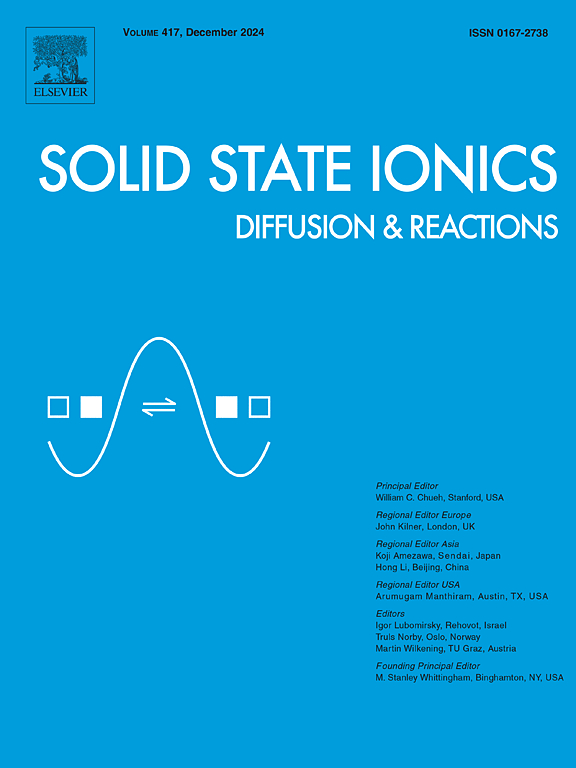LiMnO2 cathodes: Taming Jahn-Teller distortions via local symmetry engineering and multi-scale structural design
IF 3.3
4区 材料科学
Q3 CHEMISTRY, PHYSICAL
引用次数: 0
Abstract
As a high-efficiency energy storage device, lithium-ion batteries greatly benefit from performance optimization of cathode materials to enhance their overall capabilities. LiMnO2, with its advantages such as high theoretical capacity, abundant manganese resources, environmental friendliness, and low cost, has emerged as a potential candidate to replace traditional LiCoO2 and ternary cathode materials. However, its practical application still faces significant challenges, including thermodynamic instability leading to structural phase transitions, pronounced Jahn-Teller distortions, and manganese dissolution issues. This review focuses on these critical challenges, systematically discussing the development history and modification strategies of LiMnO2. Approaches such as local symmetry engineering, interface engineering, doping modification, composite structure design, and high-pressure synthesis show great potential in improving the comprehensive performance of LiMnO2. By integrating the latest research findings, we propose tailored strategies to design highly stable LiMnO2. Future studies should further explore multi-scale structural modulation and dynamic phase transition mechanisms to facilitate the practical application of LiMnO2 in high-energy-density lithium-ion batteries.

LiMnO2阴极:通过局部对称工程和多尺度结构设计来抑制jann - teller扭曲
锂离子电池作为一种高效储能器件,其整体性能的提升得益于正极材料的性能优化。LiMnO2具有理论容量高、锰资源丰富、环境友好、成本低等优点,已成为替代传统LiCoO2和三元正极材料的潜在候选材料。然而,其实际应用仍然面临着重大挑战,包括导致结构相变的热力学不稳定性,明显的Jahn-Teller扭曲和锰溶解问题。本文针对这些关键挑战,系统地讨论了LiMnO2的发展历史和改性策略。局部对称工程、界面工程、掺杂改性、复合结构设计、高压合成等方法在提高LiMnO2综合性能方面具有很大的潜力。通过整合最新的研究成果,我们提出了定制的策略来设计高稳定的LiMnO2。未来的研究应进一步探索多尺度结构调制和动态相变机制,以促进LiMnO2在高能量密度锂离子电池中的实际应用。
本文章由计算机程序翻译,如有差异,请以英文原文为准。
求助全文
约1分钟内获得全文
求助全文
来源期刊

Solid State Ionics
物理-物理:凝聚态物理
CiteScore
6.10
自引率
3.10%
发文量
152
审稿时长
58 days
期刊介绍:
This interdisciplinary journal is devoted to the physics, chemistry and materials science of diffusion, mass transport, and reactivity of solids. The major part of each issue is devoted to articles on:
(i) physics and chemistry of defects in solids;
(ii) reactions in and on solids, e.g. intercalation, corrosion, oxidation, sintering;
(iii) ion transport measurements, mechanisms and theory;
(iv) solid state electrochemistry;
(v) ionically-electronically mixed conducting solids.
Related technological applications are also included, provided their characteristics are interpreted in terms of the basic solid state properties.
Review papers and relevant symposium proceedings are welcome.
 求助内容:
求助内容: 应助结果提醒方式:
应助结果提醒方式:


